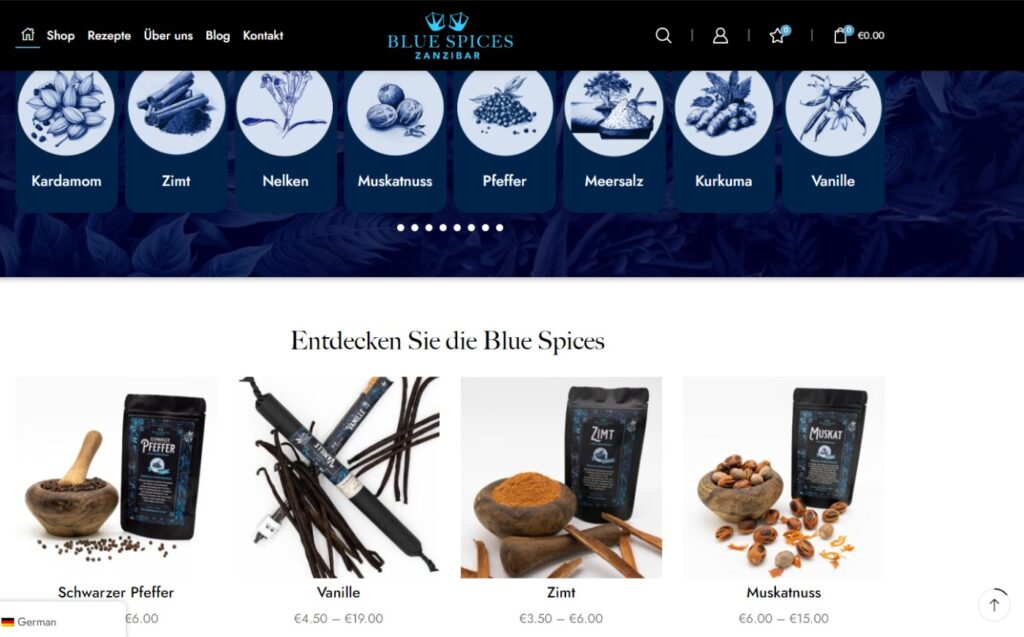
Tanzania Ecommerce Websites need good Customer Practice
Shopping Cart Abandonment

Shopping cart abandonment is one of the most vital problems for online businesses in Tanzania to overcome. It is a problem for any online store. But in East Africa adopting good customer practices can make you stand out from the crowd. Excelling in good customer relations will also boost your brand and your sales. Discover Simply IT’s ten strategies to recover these types of lost sales.
Shopping cart abandonment is a big problem for any online businesses to overcome. It’s disheartening to see potential customers showing interest in your products or services, only to leave them behind in their virtual shopping baskets.
Fortunately, there are strategies and techniques you can implement to recover these lost sales and boost your e-commerce revenue. In this blog post, we’ll explore just 10 simple and effective ways to turn abandoned online shopping baskets into sales.
First Things First, Understand the Reasons People Abandon Purchases
Before diving into strategies to combat shopping cart abandonment, it’s essential to understand why it happens. There are various reasons why potential customers leave their carts without completing the purchase, including:
- Unexpected Costs: High shipping costs, taxes, or hidden charges can deter shoppers from finalising their orders.
- Complex Checkout Process: Lengthy and complicated checkout forms can frustrate customers, leading them to abandon their carts.
- Lack of Trust: Concerns about the security of their personal information or payment details can lead to cart abandonment.
- Comparison Shopping: Some shoppers add items to their cart to compare prices or explore similar products on other websites.
- Technical Issues: Technical glitches or errors during the checkout process can be a major turn-off.
To combat shopping cart abandonment effectively, you must address these underlying issues.

10 Tips to Turn Abandoned Carts Into Sales
#1 Implement Transparent Pricing
One of the most common reasons for cart abandonment is unexpected costs. To reduce this issue, be upfront about your pricing and fees from the start. Display shipping costs, taxes, and any additional charges clearly on your product pages or in the online shopping cart.
So if there are delivery costs, import duties or VAT to be added then as soon as these are known SHOW the customer.
Product prices are usually best displayed with VAT or taxes INCLUDED so there is nothing added. If you want to communicate what a product’s net cost is and what the tax is, then you can separate these on the invoice or on the checkout page. But the initial figure a customer sees should always be inclusive of tax. This builds trust.
Equally important is offering prices and fees in other currencies. You may only be selling your products within Kenya, Tanzania or Zanzibar in Shillings but customers will often only think in their own currency of Rands, dollars, Euros, Yen or Pounds Sterling, so help them to know what they will be paying transparently. Use a Currency Switching plugin on your website.
You can even consider offering free shipping or promotional discounts on shipping for orders over a certain amount.
So, the Golden Rule is: ‘No Surprises’. When customers know exactly what to expect, they are more likely to complete their purchases.

#2 Build Trust and Credibility
Building trust is crucial to reduce shopping cart abandonment. Shoppers need to feel confident that their personal information and payment details are secure. Here’s how you can establish trust:
- Secure Payment Methods: Offer secure payment options, such as PayPal or credit card processing through reputable providers. Display trust badges and security icons prominently during the checkout process.
- Transparent Return Policy: Make your return and refund policy easily accessible and transparent. A hassle-free return policy can reassure hesitant shoppers.
- Customer Reviews and Ratings: Display customer reviews and ratings for your products. Positive feedback from previous buyers can build confidence in your brand.
- Offer the customer an opportunity to see the website in their own language. Nothing builds trust better than clear communication. See tip #9 below: ‘Have multiple language choices for your website’. This is very important if you are selling to tourists or to overseas customers.
Discover how to leverage social proof to build brand trust and credibility.

#3 Make the Checkout Process Simple
A complex and time-consuming checkout process can frustrate customers and cause them to abandon their carts. To streamline the process:
- Reduce Form Fields: Minimise the number of required fields in your checkout forms. Ask for essential information only, such as shipping address, billing address, and payment details.
- Offer a Guest Checkout Option: A guest checkout option that allows customers to complete their purchase without creating an account. You can always encourage account creation after the sale.
- Add Progress Indicators: Use progress bars to show customers how far they are in the checkout process. This provides a sense of control and reduces anxiety.
- Optimise the Checkout for Mobile: Ensure that your checkout process is mobile-friendly, as many shoppers use smartphones to make online purchases.
- Offer multiple saved billing or delivery addresses: Offer ways to make it easy for regular customers to have choices about which address to use on a payment card or multiple addresses for delivery addresses. Having a choice of delivery address will help greatly in customers choosing to buy for friends or family with a single click once the addresses have been added.

#4 Implement a Cart Abandonment Email Strategy
One of the most effective ways to recover abandoned carts is through email marketing. Set up automated email campaigns that target customers who have left items in their carts. Here’s a sequence you can follow:
- Reminder Email: Send a friendly reminder email within 24 hours of the customer abandoning their cart. Include images of the abandoned products, their prices, and a direct link to the cart. Doing so will make it easy for customers to complete their purchase.
- Offer Incentives: In subsequent emails, consider offering incentives like discounts or free shipping. Incentives will encourage customers to return and entice them to purchase the items in their cart.
- Personalization: Personalize your emails by addressing the customer by name and reminding them of the items they left behind. Use dynamic content to display the specific products in the cart.
- Limited-Time Offers: Create a sense of urgency by adding a countdown timer or state that the items in the cart are only reserved for a limited time.
#5 Optimise Website Speed and Performance

- Mobile Optimization: Test your website’s performance on various devices and browsers to ensure it loads quickly and displays correctly.
- Page Load Times: Optimize images and code to reduce page load times. Use content delivery networks (CDNs) to distribute content efficiently.
- Server Load: Get the agency that has built your ecommerce website to test the load capacity of the website. This just simply means the maximum number of consecutive people who can access your website at the same time. You may be in for a shock. If the server that hosts your website is on a shared server (most are) and it crashes if 6 people browse the website at the same time this may be an issue that causes abandoned carts. Decide what is acceptable for your level of activity on the website and talk to your technical support.
- Error Handling: Implement error monitoring and handling mechanisms to address technical glitches promptly.
Find out about your website speed and why it is so important.
#6 Offer a Hassle-Free Return Policy
A lenient and customer-friendly return policy can alleviate concerns about making a purchase. Make sure your return policy is easily accessible on your website and clearly explains the return process, including any associated costs.
Consider offering a no-questions-asked return policy within a reasonable timeframe to assure and instill confidence in your customers.
Consider displaying this returns policy on the website in multiple languages. Make it as simple as possible.

#7 Use Remarketing and Retargeting Ads
Harness the power of online advertising to retarget visitors who have abandoned their carts. Platforms like Google Ads and Facebook & Instagram (MetaBusiness) boosted Ad Campaigns allow you to target specific custom audiences based on user behaviour.
Craft compelling email campaigns or general ad campaigns that remind potential customers of the items they left behind and entice them to revisit your website with a discount or a free gift.

#8 Personalise the Shopping Experience
Personalisation can significantly impact the shopping experience for users.
Use data such as browsing history, past purchases, and demographic information to personalise product recommendations and marketing messages.
When customers feel that your website understands their preferences, they are more likely to complete their purchases.

#9 Have multiple language choices for your website
When customers feel that your website understands their preferences, they are more likely to complete their purchases. This is most often seen in currencies (which we have spoken about) and also language.
According to a recent study by CSA Research, localization can have a significant effect on the online purchasing behavior of consumers around the world.
A survey of 8,709 consumers in 29 countries discovered that 76% customers prefer purchasing products with information in their own language! That is quite a staggering fact.
Read the results of the CSA Study here. The study found that:
- 40% of consumers will not buy from websites in other languages
- 76% of consumers prefer products with information in their own language
- 75% of consumers are more likely to purchase the same brand again if the customer care policy is in their language
These findings suggest that giving the option to customers to read an ecommerce website in their language (the technical term is localization) can help ecommerce websites in Keya, Tanzania and Zanzibar reach more potential customers, increase their satisfaction, and create stickier customer relationships.
Simply IT specializes in producing websites in any language. Not just a translation but we make sure that Google has the keywords indexed for your website so potential customers find it by searching in their own language. This is called Multi-lingual SEO (read more). Call us to find out how much a language costs for a year. (In 2024 it is merely $100 a year for any language). Call us for a chat.

#10 Provide Excellent Customer Support
Offering excellent customer support can help address customer concerns in real-time and potentially prevent cart abandonment. Here are some strategies:
- Live Chat: Implement a live chat feature that allows customers to ask questions or seek assistance during the shopping process.
- Customer Service Contact Information: Clearly display your customer service contact information, including phone numbers and email addresses. This will enable customers can easily reach out for help whenever they need it.
- Frequently Asked Questions (FAQs): Create a comprehensive FAQ section that addresses common customer queries and concerns.

Conclusion
Overall, reducing shopping cart abandonment requires a multifaceted approach that addresses everything from pricing transparency to email marketing. By implementing the strategies above, you can recover lost sales, improve the overall e-commerce experience, and increase your conversion rate. Remember that continually monitoring and refining your strategies is key to long-term success in combating cart abandonment and boosting sales.
Simply IT are experts in developing e-Commerce websites in Zanzibar, Tanzania and can help you with any of the steps involved in building a successful, multi-currency, multilingual ecommerce website that successfully sells even when a customer abandons their cart. Contact Us Today.
Ecommerce Marketing Articles
See All
10 Ways to get your Tanzania website top on AI & Google searches
Why ranking your website on Google & AI searches is vital for your Tanzania business and 10 steps on how to use SEO to do it, from the experts at Simply IT Zanzibar

Where can I get professional affordable web developers and expert SEO providers?
Can you suggest some reputable international Digital Marketing agencies that offer affordable SEO services?” How do I determine the reliability of these agencies? Where in the world can I get professional yet affordable web developers with proven expert SEO knowledge?

What makes a Good Website?
Whatever your business or hobby, simply having a website is not enough – you need to ensure that your website is seen, is effective, user-friendly and engaging. Focus on the four pillars of a great website.




